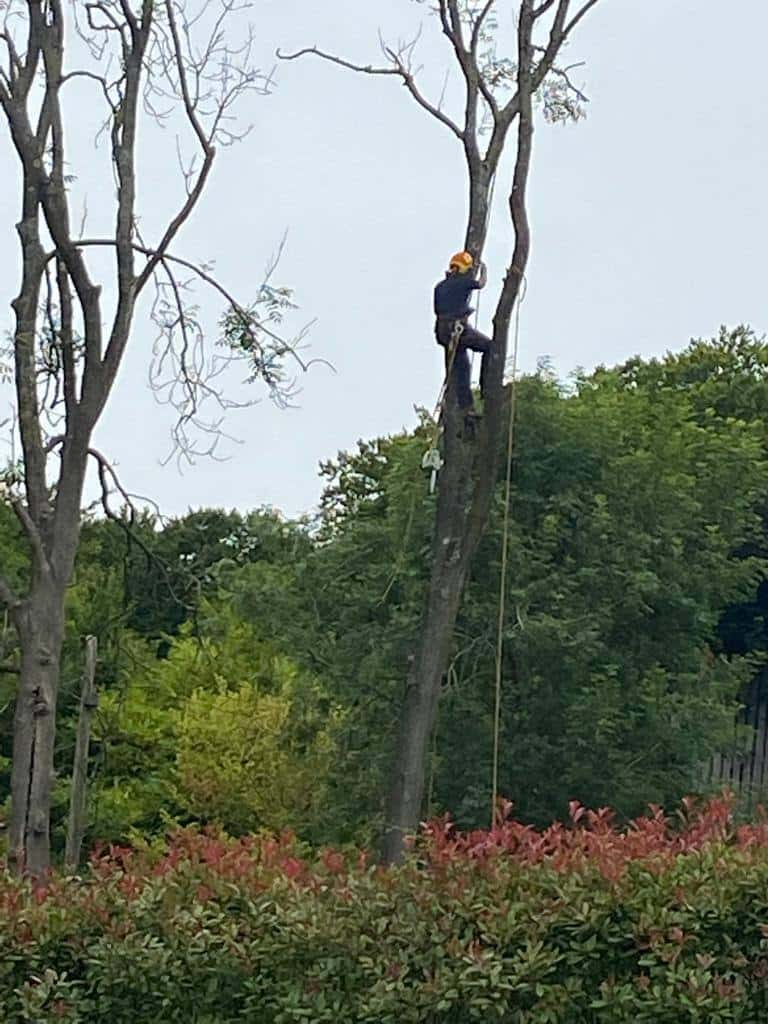Tree surgery is essential for maintaining healthy, attractive trees and ensuring their safety within your landscape. With various types of tree surgery available, understanding when each procedure is necessary can help homeowners and property managers make informed decisions about their trees. At Stowmarket Tree Surgeons, we offer expert tree surgery services in Stowmarket, Suffolk, tailored to meet the specific needs of each tree. In this blog, we explore the different types of tree surgery and explain when each is required to keep trees healthy, safe, and looking their best.
1. Crown Reduction
Crown reduction is a common procedure that involves carefully reducing the size of a tree’s canopy. This is achieved by shortening the outer branches, which helps to reduce the overall height and spread of the tree without compromising its natural shape.
- When It’s Needed: Crown reduction is recommended when a tree has grown too large for its surroundings or poses a risk to nearby structures or power lines. It’s also beneficial for trees that have sustained damage from storms or high winds, helping to restore balance and reduce stress on weakened branches.
- Benefits: Crown reduction minimises the risk of branch failure and improves light penetration, creating a safer and healthier environment around the tree.
2. Crown Thinning
Crown thinning is the process of selectively removing branches within the tree’s canopy to reduce its density. Unlike crown reduction, which alters the tree’s overall size, crown thinning maintains the tree’s original shape while allowing more light and air to pass through the canopy.
- When It’s Needed: Crown thinning is ideal for trees with dense foliage that cast heavy shadows, particularly when increased sunlight is desired for surrounding plants. It’s also beneficial for reducing wind resistance in mature trees, lowering the risk of wind damage.
- Benefits: Crown thinning enhances airflow and light, reducing the likelihood of fungal growth and promoting a healthier, more balanced tree structure.
3. Crown Lifting
Crown lifting, also known as crown raising, involves removing the lower branches of a tree to increase the clearance between the ground and the canopy. This is often done to improve access beneath the tree or to create a more open view.
- When It’s Needed: Crown lifting is commonly used for trees near pathways, roads, or driveways, where low-hanging branches could obstruct traffic or pedestrian access. It is also useful in gardens and parks to create a more spacious feel by lifting the canopy.
- Benefits: By raising the canopy, crown lifting enhances safety, visibility, and accessibility while maintaining the tree’s natural beauty.
4. Pollarding
Pollarding is a more intensive method that involves cutting back a tree’s branches to the trunk or main stems, which encourages the growth of new shoots. This practice is generally carried out on younger trees and is repeated every few years to maintain the desired shape and size.
- When It’s Needed: Pollarding is often used in urban environments to control the size of trees in limited spaces, such as streets or small gardens. It’s also commonly employed for certain tree species, like willow or lime, which respond well to the process.
- Benefits: Pollarding helps to control the size of trees and encourages dense, fresh growth. When done correctly, it extends the tree’s lifespan by promoting a controlled growth pattern.
5. Tree Felling
Tree felling is the complete removal of a tree, usually when it has become hazardous or no longer serves its purpose within the landscape. Tree felling can be performed in one piece (straight felling) or in sections if space is limited.
- When It’s Needed: Felling is necessary when a tree is dead, diseased beyond recovery, or poses a safety risk due to structural instability. It’s also required when a tree obstructs planned construction or landscaping changes.
- Benefits: Removing a problematic tree improves safety and allows for replanting, creating opportunities for new growth within the space. At Stowmarket Tree Surgeons, we carry out felling with the utmost care and ensure that surrounding areas remain undamaged.
6. Stump Grinding
Following tree felling, stump grinding is used to remove the tree stump, preventing regrowth and allowing for a flat surface where the tree once stood. A specialised machine grinds the stump down to below ground level, eliminating any visible traces.
- When It’s Needed: Stump grinding is recommended when the remaining stump is obstructive, unattractive, or interferes with new landscaping plans. It’s especially useful when replanting or laying a new lawn over the area.
- Benefits: Stump grinding prevents the stump from becoming a trip hazard, discourages pest infestations, and provides a clear space for other landscaping purposes.
7. Formative Pruning
Formative pruning is a practice applied to young trees to guide their shape and structure. This type of pruning is less intensive and focuses on removing small branches to encourage balanced growth and prevent future structural issues.
- When It’s Needed: Formative pruning is essential for young trees in the early stages of development, particularly for species that are prone to irregular growth patterns. It’s also useful for newly planted trees to ensure they grow strong and well-formed.
- Benefits: Formative pruning promotes a healthy, stable structure in young trees, reducing the need for corrective pruning as they mature. This proactive approach enhances both the health and aesthetic appeal of the tree.
Conclusion
Understanding the various types of tree surgery and their applications is key to maintaining healthy, attractive trees that thrive in your landscape. Each technique offers unique benefits and is essential for addressing specific challenges, from enhancing safety and visibility to promoting balanced growth. At Stowmarket Tree Surgeons, we are committed to providing expert tree surgery services across Stowmarket, Suffolk, ensuring that each tree receives the care it needs to flourish.
If you require professional tree care or advice on which type of surgery is best suited to your trees, contact us today. Our skilled team is here to assess your trees and recommend the appropriate services, helping you create a safe and beautiful outdoor environment. Let us support the health and longevity of your trees with tailored solutions that meet the highest standards of quality and care.
Call us on: 01449 706 096
Click here to find out more about Stowmarket Tree Surgeons
Click here to complete our contact form and see how we can help with your tree needs.

